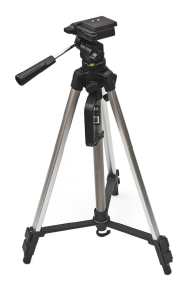This problem solving activity has a number (multiplication and division) focus.
Tripods have three legs and are used to stand cameras on.
If you had 18 legs, how many tripods could you make?
- Model and explain addition of sets of three and/or subtraction of sets of three.
- Count forward or back in threes.
- Devise and use problem solving strategies (act it out, draw a picture, use equipment appropriately).
This problem involves forming groups of 3. Whether the students use repeated subtraction or repeated addition depends on the approach that they use. If they start with 18 legs and form groups of 3 until no legs are left they are modelling repeated subtraction. They are using repeated addition if they start with one tripod (3 legs) and keep adding groups of 3 until they have 18 in total.
This problem could be adapted to reflect a context of tricycles and wheels.
- Tripod (or picture from the Copymaster)
- Sticks or rods
- Copymaster of the problem (English)
- Copymaster of the Problem (Māori)
The Problem
Tripods have three legs and are used to stand cameras on. If you had 18 legs, how many tripods could you make?
Teaching Sequence
- Show the students the tripod – count the legs, discuss its function.
- Read the problem to the class.
- Brainstorm ways to solve the problem.
- If the students suggest that they would like to use equipment ask them for ideas about what they think would be suitable.
- Allow the students to work on the problem – individually or in small groups.
- Circulate and ask the students to explain their solutions.
- Share solutions.
Extension
If you can see 27 legs, how many tripods are there?
Solution
When the 18 tripod legs are arranged in groups of 3 they form 6 tripods (18 ÷ 3 = 6, or 3 + 3 + 3 ... = 18).
Solution to the Extension
When the 27 tripod legs are arranged in groups of 3 they form 9 tripods (27 ÷ 3 = 9, or 3 + 3 + 3 ... = 27).
